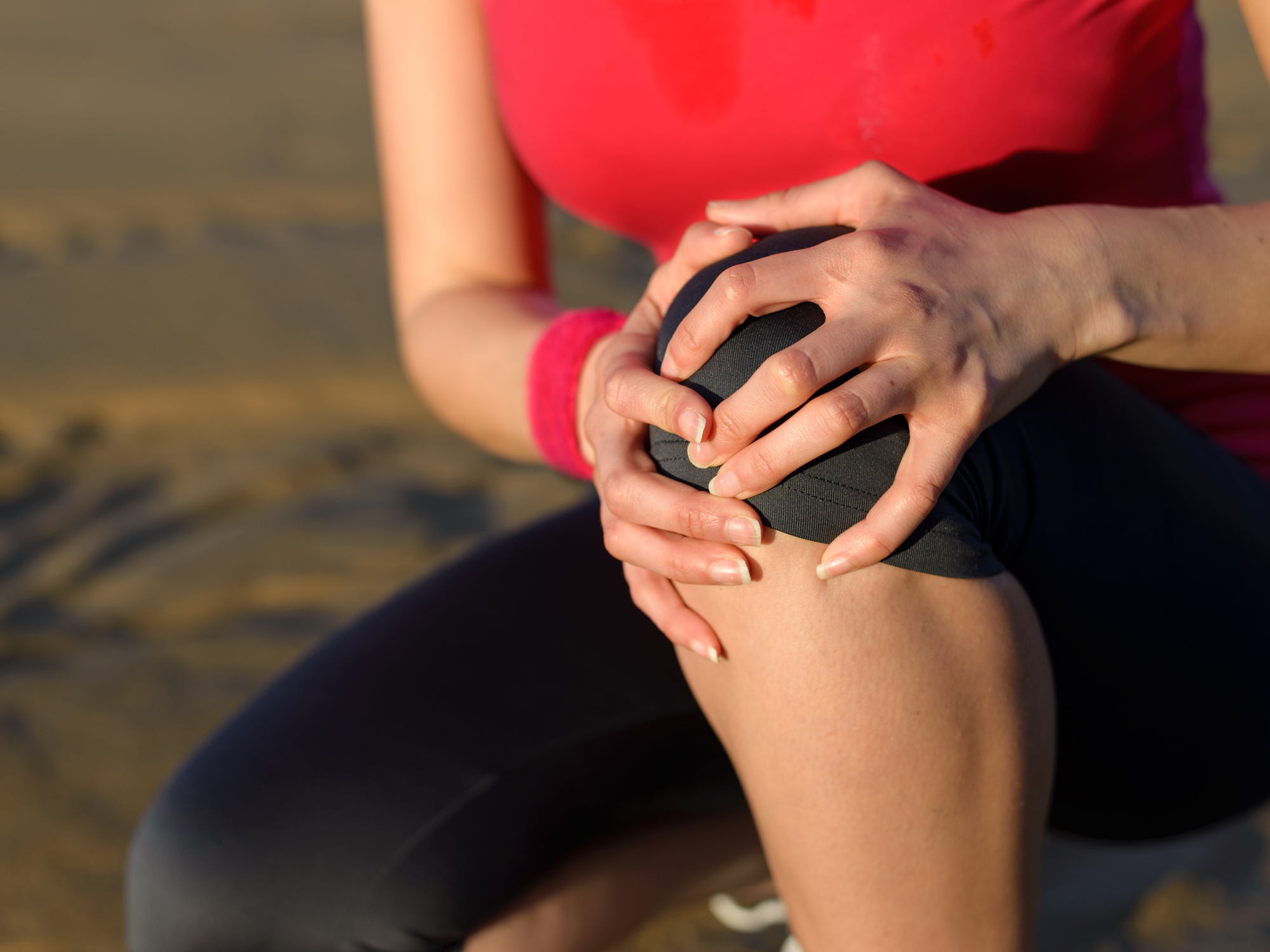Get Easy Health Digest™ in your inbox and don’t miss a thing when you subscribe today. Plus, get the free bonus report, Mother Nature’s Tips, Tricks and Remedies for Cholesterol, Blood Pressure & Blood Sugar as my way of saying welcome to the community!
4 steps to reduce arthritis pain and increase mobility

Does knee pain bring you to your knees?
Maybe the question is: does knee pain bring you to your chair. If you suffer from knee pain, you need to fight the temptation to avoid pain by avoiding movement, because it’s only making matters worse…
A study in Arthritis Care and Research observed the activity of 1,168 men and women 49-83 years old with Osteoarthritis (OA).
Wearing accelerometer devices that measured the subjects’ daily sedentary time (not including any moderate-to-vigorous physical activity they may have participated in), found that spending more time not moving has the biggest impact on the outcome of their functionality.
In other words, even if you exercise — go to a class several times a week or you swim regularly — if you come home or head to the office and sit the rest of the day, your OA will negatively impact your mobility even more.
Plain and simple: one hour of movement a day won’t compensate for the other 23 you spend sitting.
Where to start
First, try isometric strength exercises.
These are small, contract-release exercises that can be done anywhere. If you are not ready to leave the house to exercise, these help reduce the obstacle of needing to go somewhere to exercise. Focusing on frequency — how often you can do them — instead of intensity, is best when it comes to join stability.
If you love exercise and do vigorous exercise often, you may think this type of exercise is too light or too easy. You’d be wrong…
The little things sometimes make the biggest difference. While your large muscles often get exercise, your small ones — the global stabilizers — often don’t. The stronger your big muscles get the weaker your little ones can get. So don’t skip this step if you have OA.
Find water
Water exercise reduces the effect of gravity on your joints. A broader, pain-free range of motion is often possible in the water even if nowhere else. You can swim, walk and perform resistance exercises in the water. If you’re not a “swimmer” you can still get great exercise in the water by walking in water navel-to-nipple deep. Alternately, wear a flotation device around your waist in deeper water for aqua jogging.
Exercise unevenly
The natural tendency, if you exercise alone or in a class, might be to do equal numbers of exercise on the right and left. But if you have OA chances are that you are not symmetrical.
If you’re compensating with a limp or a lean toward side, often you’ve just grown to know that as normal, but it puts pressure on one side of your body repeatedly. During exercise is when it really becomes apparent. You will naturally identify a weaker side that needs more attention: Give that side a second helping of exercise — or sometimes one side just needs more stretching than the other — to balance your body strength better.
Spread the love to other joints
Just as exercising evenly seems logical, focusing on exercise for the painful joint might be your first inclination. Be sure to include all your joints, especially the joints above and below the painful one.
If you have knee pain, strengthen the muscles around your hips and your ankles and feet. We move with integration of all these parts. You might find you can target other parts and help remove stress from the painful joint by realigning your body.
When the hip is stronger and able to do its share of work, your knee may take less strain. Likewise with the feet and ankles that provide your foundation. If you can maintain mobility and strength at your ankles, your knees may be less compromised as you move. Try a simple ankle mobility exercise like writing your name with your big toe. If you’re able to do little else, add this to your daily or every-other-day schedule… right after you brush your teeth. Just do it. It may seem like a small movement, but it will get you big results.












